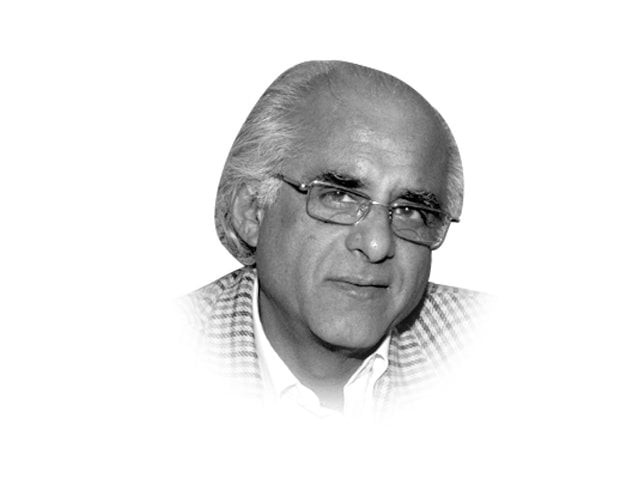Invasion of Sindh
The Chachnama tells us that in the year 632 Mughera led the first assault, a naval expedition, on Debal.

The writer is author, most recently, of The Apricot Road to Yarkand (Sang-e-Meel, 2011) and a member of the Royal Geographical Society
salman.rashid@tribune.com.pk
In the caliphate of Hazrat Usman (RA) one Hakim bin Hailah Abdi, a poet and orator, was sent out to reconnoitre the approaches to Sindh. From him came this report: “Its water is dark; its fruit is bitter and poisonous; its land is stony and its earth is saltish. A small army will soon be annihilated there, and a large army will soon die of hunger.”
Now, Makran and Gandava (below the Bolan Pass) were already under tenuous control of the Arabs. However, Abdullah bin Amir, the governor of these regions, was advised against an attack on Sindh by the caliph after the reconnaissance report had been received. And so, years were to pass until the next attempt was made during the caliphate of Hazrat Ali (RA) in 660. Coming by way of Panjgur, the Arab force was successful at Kalat, but news of the assassination of the caliph resulted in withdrawal without the expedition reaching its logical end.
The third attack took place during the reign of Muawiya in 664. A force under Abdullah bin Sawad comprising 4,000 men attacked Kalat. The battle was long and hard, which went this way and that between the two sides until the mountaineers of Kalat routed the Arabs who fled to Makran.
Rashid bin Omar leading the fourth attack in an unnamed year (probably 668) also came against Kalat. Once again the contest was hard. The commander fell in battle and the invaders were routed with great loss of life. So far as Sindh was concerned, 12 peaceful years ensued. In 680, the commander of the army in Makran, one Manzir bin Harud, was sent by the caliph on plundering sorties against Sindh to make good the expenses of the failed expeditions.
This unfortunate commander succumbed to diseases, dying in a town named Burabi by the Chachnama. The book does not mention the locale of this place making identification difficult.
In the reign of caliph Walid bin Abdul Malik and governorship in Iraq of Hujaj bin Yusuf, the fifth expedition was undertaken against Sindh. The commander, Buzail bin Tahfa, led a small force by sea and, we read, marched to Nerun (Hyderabad). At this time, the country was firmly in the hands of Raja Dahar and this inland march is clearly an inconsistency. Particularly so because we later read that Buzail died in combat outside the walls of Debal where he had been joined by 4,000 troops from Makran sent by governor Mohammad bin Haroon.
While Ahmad Bilazri (Futuh ul Baladan) confirms this expedition, he tells us in addition of another attack not mentioned by the Chachnama. This being the expedition led by Obaidullah bin Nabhan and his death in battle causing the invaders to withdraw.
Now, as a result of these various battles, while many Arabs had been killed, many more languished in Sindhi captivity. Consequently, appointing Mohammad bin Qasim (MbQ) the general, Hujaj petitioned caliph Walid that it was necessary to free these prisoners. Walid demurred, however, saying that there had already been too many casualties and that the expedition was bound to be ‘a source of great anxiety’. There was, besides, the consideration of the large outlay.
Hujaj wrote back, “I undertake to pay back into the royal treasury double the amount spent on provisions and other items of expenditure for the army (in Iraq)”. The rest, as they say, is history.
Aside: There was a large body of Arabs already in the pay of Raja Dahar. These were the Alafis who, having fallen out with Hujaj, had rebelled and fled some time before. They fought with desperate courage against the Arabs under MbQ. Desperate surely they were because they knew if Dahar fell there was no returning for them to the west where only execution awaited them at the hands of Hujaj and his kinsfolk.
So, who were the Alafis?
Published in The Express Tribune, February 2nd, 2013.















COMMENTS
Comments are moderated and generally will be posted if they are on-topic and not abusive.
For more information, please see our Comments FAQ